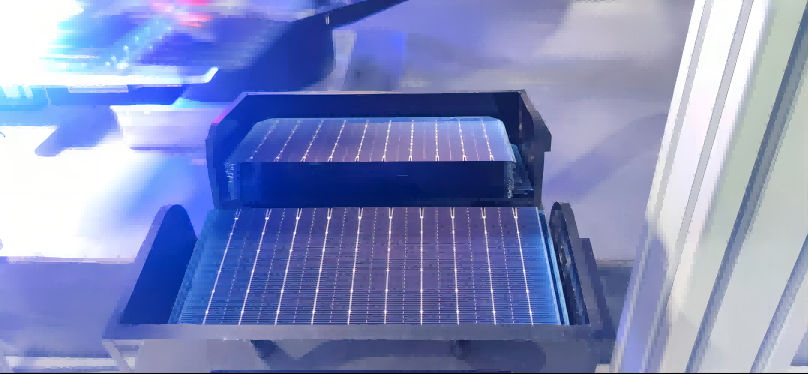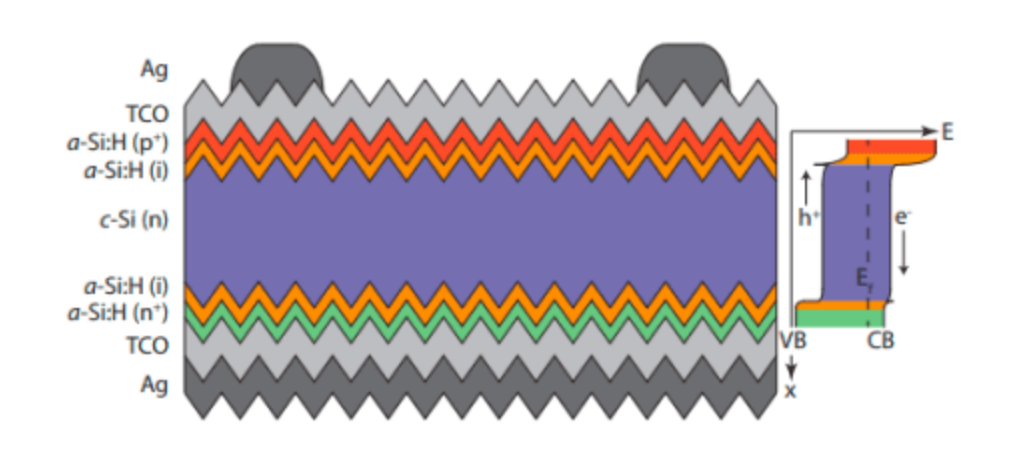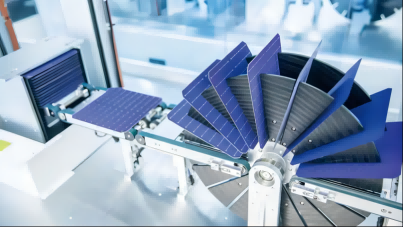The performance of heterojunction cell is closely related to its structure and process. Among them, film thickness is an important parameter, which directly affects the photoelectric conversion rate of heterojunction cells. Therefore, studying the effect of film thickness on the photoelectric conversion rate of heterojunction cells is of great significance for optimizing design and improving efficiency. In order to help solar cell manufacturers accurately detect film thickness, GT Solar has produced POLY Built-in Thin Film Thickness Tester. This equipment relies on industry-leading innovative optical measurement technology and uses the principle of optical interference to scientifically and intuitively analyze film thickness, optical constants and other performance parameters.

How heterojunction solar cells work
The working principle of heterojunction solar cells is that when sunlight shines on the surface of the cell, part of the light is reflected by the ITO film, part of the light is absorbed by the amorphous silicon film, and part of the light penetrates the amorphous silicon film and reaches the crystalline silicon substrate. In the crystalline silicon substrate, photons excite electron-hole pairs, and electrons and holes diffuse to the N-type and P-type regions respectively, forming a built-in electric field. At the heterojunction between the amorphous silicon film and crystalline silicon, due to energy band mismatch, an energy level step is formed, which hinders the recombination of carriers and improves the separation efficiency of electrons and holes. In the amorphous silicon film, due to doping, a P-N junction is formed, which further strengthens the built-in electric field. Finally, electrons and holes are collected through the ITO film and metal electrodes to form current and voltage, achieving photoelectric conversion.

Effect of film thickness on optical properties of heterojunction cells
The optical properties of heterojunction cells mainly include transmittance, reflectivity, and absorptivity, which together determine the light capture capability and the generation of photogenerated carriers of heterojunction cells. Film thickness has an important impact on the optical performance of solar cells.
● The effect of film thickness on light transmittance: The light transmittance of film decreases as the film thickness increases. This is because an increase in film thickness increases the chance of multiple reflections of light in the film, thereby increasing the intensity of reflected light. For heterojunction cells, the lower the reflectivity, the more conducive it is for light to enter the crystalline silicon layer, generate more photogenerated carriers, and increase the short-circuit current of the solar cell.
● The effect of film thickness on reflectivity: Similar to the effect of light transmittance, an increase in film thickness will increase the chances of multiple reflections of light in the film, thereby increasing the intensity of reflected light. The same is true for heterojunction cells. The lower the reflectivity, the more conducive it is for light to enter the crystalline silicon layer, generate more photogenerated carriers, and increase the short-circuit current of the solar cell.
● The effect of film thickness on light absorbance: For heterojunction cells, the light absorbance depends on the material and band structure of the film. For amorphous silicon films, due to its large energy band width and low absorption rate of visible light, the thickness of the film has little effect on its absorption rate. For the crystalline silicon layer, due to its small energy band width and high absorption rate of visible light, the thickness of the film has a greater impact on its absorption rate. For heterojunction cells, the higher the absorption rate, the more conducive it is for light to generate more photogenerated carriers in the crystalline silicon layer and increase the short-circuit current of the cell.

When discussing the film thickness, the physical parameters of the film thickness will affect the performance of heterojunction solar cells. Therefore, manufacturers often need to create higher benefits for the performance of the cells through reasonable and scientific production processes. As an inspector, GT Solar provides experienced and highly satisfactory services to producers. In order to solve the problem of film thickness, GT Solar has produced POLY Built-in Thin Film Thickness Tester, which provides photovoltaic enterprise users and their solar energy Battery manufacturers do their best and should do their best!